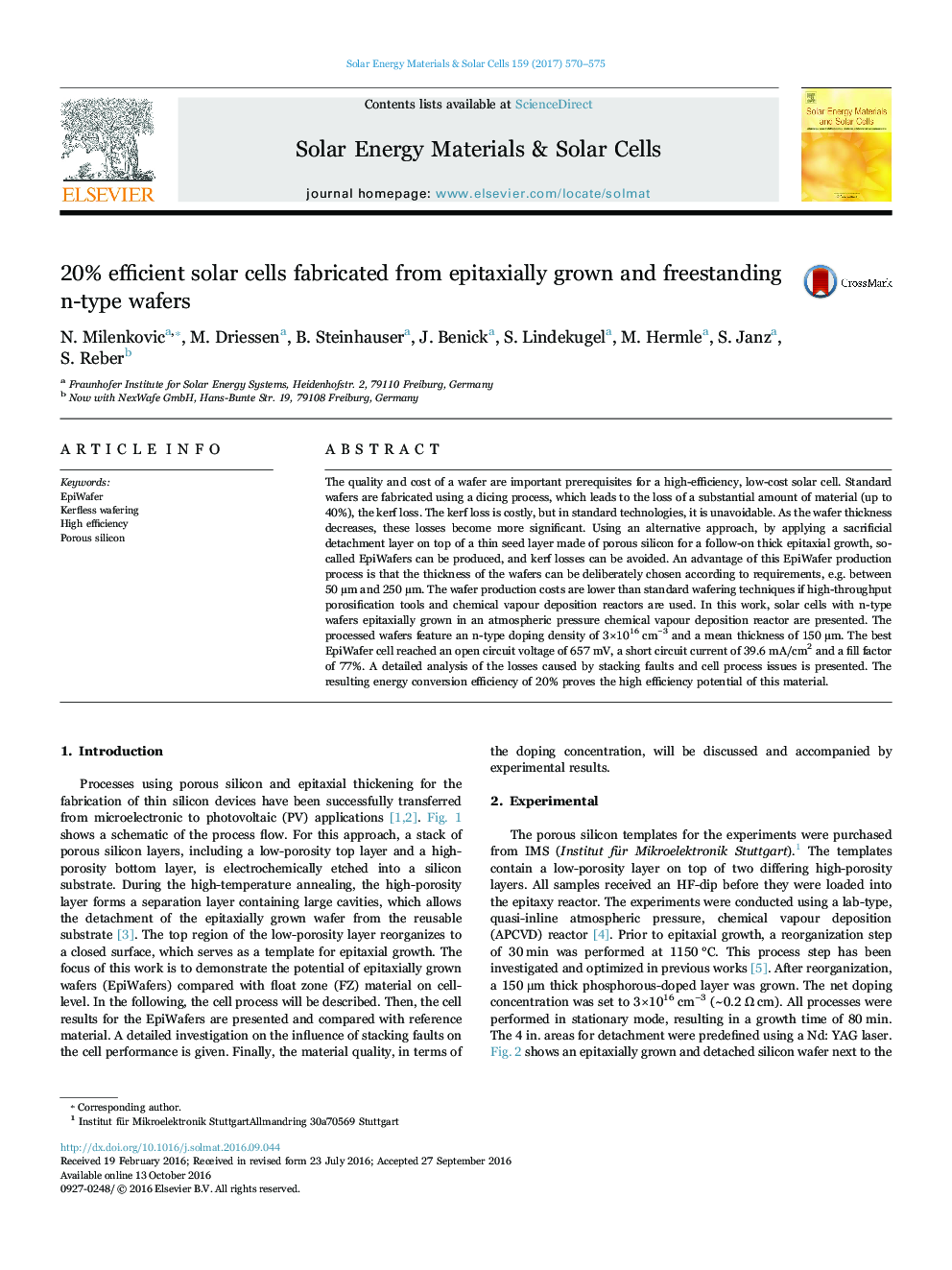| کد مقاله | کد نشریه | سال انتشار | مقاله انگلیسی | نسخه تمام متن |
|---|---|---|---|---|
| 6457595 | 1420664 | 2017 | 6 صفحه PDF | دانلود رایگان |

- Wafers have been processed by a kerfless technology using epitaxial growth.
- Conversion efficiencies up to 20% were reached with EpiWafers.
- Detailed analysis shows that increased recombination occurs at stacking faults.
- Reduction of doping concentration increases effective carrier lifetime above 1Â ms.
The quality and cost of a wafer are important prerequisites for a high-efficiency, low-cost solar cell. Standard wafers are fabricated using a dicing process, which leads to the loss of a substantial amount of material (up to 40%), the kerf loss. The kerf loss is costly, but in standard technologies, it is unavoidable. As the wafer thickness decreases, these losses become more significant. Using an alternative approach, by applying a sacrificial detachment layer on top of a thin seed layer made of porous silicon for a follow-on thick epitaxial growth, so-called EpiWafers can be produced, and kerf losses can be avoided. An advantage of this EpiWafer production process is that the thickness of the wafers can be deliberately chosen according to requirements, e.g. between 50 µm and 250 µm. The wafer production costs are lower than standard wafering techniques if high-throughput porosification tools and chemical vapour deposition reactors are used. In this work, solar cells with n-type wafers epitaxially grown in an atmospheric pressure chemical vapour deposition reactor are presented. The processed wafers feature an n-type doping density of 3Ã1016 cmâ3 and a mean thickness of 150 µm. The best EpiWafer cell reached an open circuit voltage of 657 mV, a short circuit current of 39.6 mA/cm2 and a fill factor of 77%. A detailed analysis of the losses caused by stacking faults and cell process issues is presented. The resulting energy conversion efficiency of 20% proves the high efficiency potential of this material.
Journal: Solar Energy Materials and Solar Cells - Volume 159, January 2017, Pages 570-575